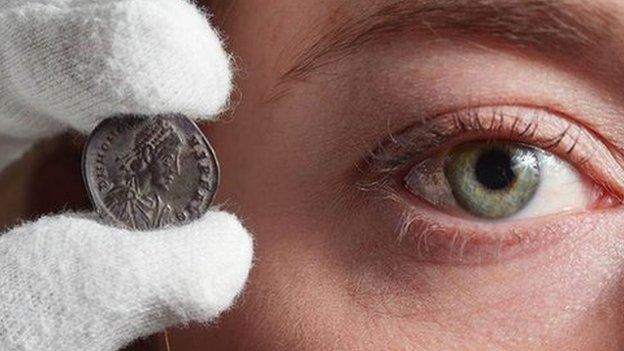'Significant' Pictish fort found off Aberdeenshire coast
- Published
The North of Scotland is rich in Pictish heritage
Archaeologists have uncovered a "very significant" Pictish fort after scaling a remote sea stack off the coast of Aberdeenshire.
The team from the University of Aberdeen believe the ancient remains could be one of many along the coast south of Stonehaven.
It is the first time an official excavation has been carried out there.
Pictish symbol stones were said to be found on the Dunnicaer sea stack by locals in the 19th Century.
Until this latest discovery, it was unclear whether the site held other historical remains.
The Aberdeen team believe they have found the remains of a house, a fireplace and ramparts.
Stonehaven youths
Lead archaeologist Dr Gordon Noble said it could be the precursor to Dunnottar Castle, the remains of which lie a quarter of a mile south of the site.
He explained: "We've opened a few trenches so far. This is the site where, in the 19th Century, they found six Pictish stones when a group of youths from Stonehaven came up the sea stack.
"Here we've got clear evidence of people living on the sea stack at least for part of the year. Certainly people are living here for long enough to create this really nice well-constructed hearth and these lovely floor layers."
The remote location meant the archaeologists needed the assistance of a specialist just to reach the site.
Their climbing guide was Duncan Paterson.
He said: "Considering the team themselves had never been on a rope, never been on a harness let alone put a helmet on or climbed up slopes like this - it was a big challenge."
"We had tide times to consider. We've got a bit of grassy slope, this conglomerate and mud and turf to deal with.
"So a big challenge."
The team will continue to dig until the weekend.
- Published3 December 2014
